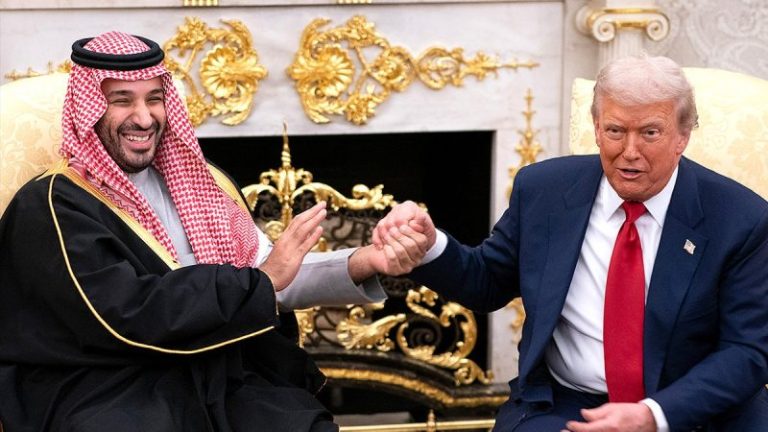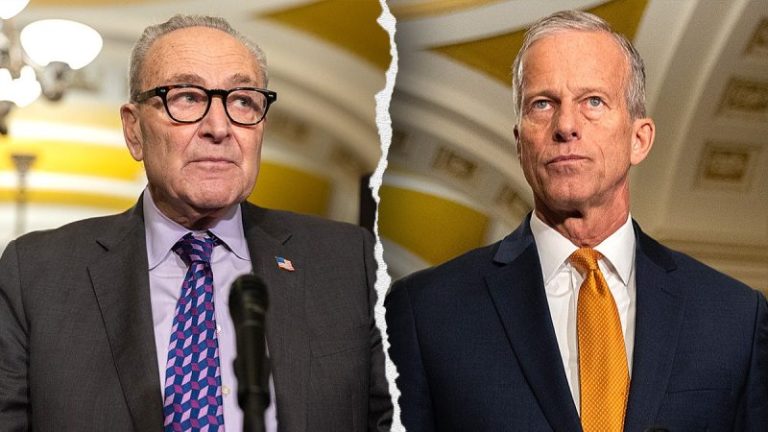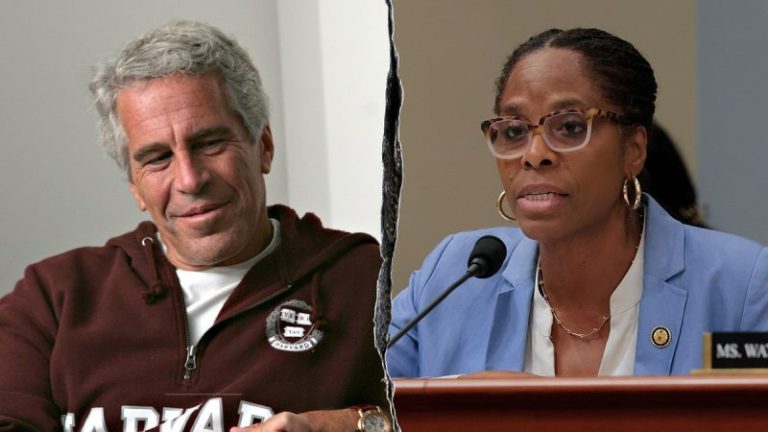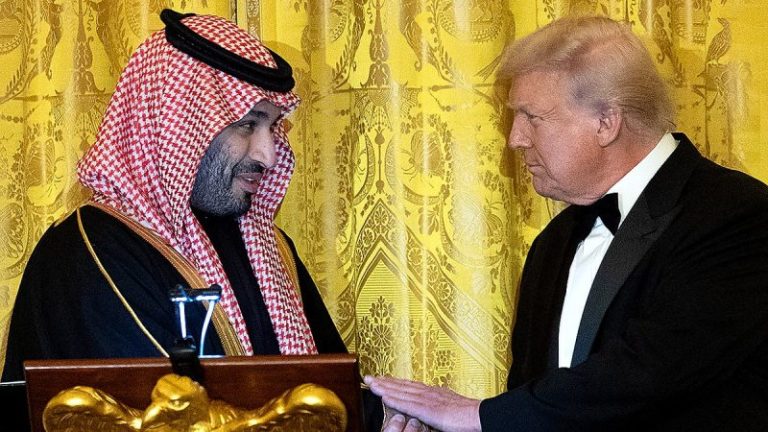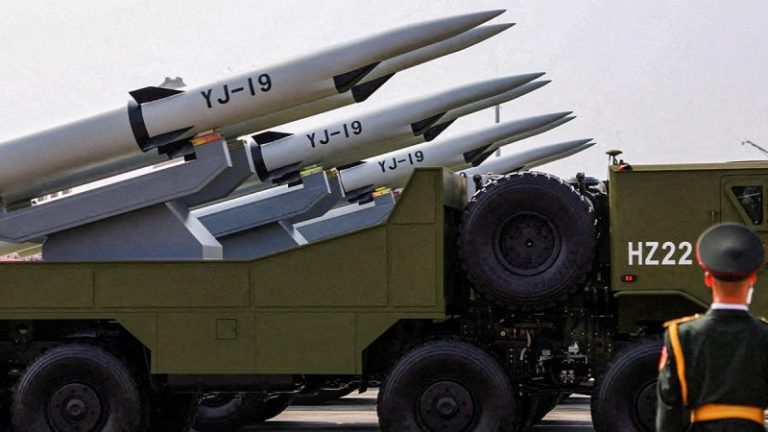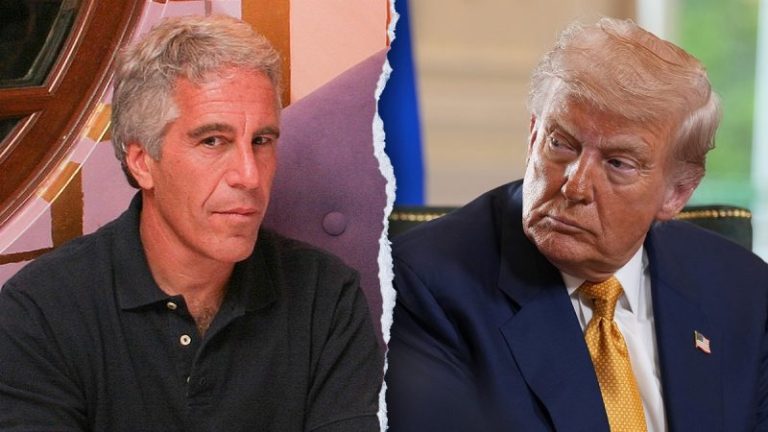President Donald Trump made a point to shake the hand of Saudi Crown Prince Mohammed bin Salman at the White House Tuesday in a warm welcome — in contrast to former President Joe Biden, who came under scrutiny for fist-bumping the Saudi prince in 2022.
Biden’s fist bump occurred during a trip to Saudi Arabia in July 2022, and attracted criticism due to U.S. intelligence reports that indicated that bin Salman signed off on the 2018 assassination of Washington Post journalist Jamal Khashoggi.
But when bin Salman arrived at the White House Tuesday, Trump indicated that the Saudi prince deserved a more formal greeting.
‘And Trump doesn’t give a fist pump. I grab that hand,’ Trump told reporters Tuesday. ‘I don’t give a hell where that hand’s been, I grab that hand. Remember Biden? He travels for 20 hours, he gets out and he gives a fist bump. No. When you get out of the plane and you got the future king and the man who is one of the most respected people in the world, you shake his hand, you don’t give him a fist bump, right?’
‘We don’t want to ask you about that,’ Trump said, referencing bin Salman. ‘But I can’t imagine you were thrilled.’
The Saudi leader’s arrival Tuesday came with full pageantry. A red carpet rolled across the South Lawn, military honor guard and an Air Force flyover underscored the formal state-level welcome.
Biden’s 2022 fist bump with bin Salman occurred as he stepped out of a vehicle outside the Al Salam Royal Palace in Jeddah, Saudi Arabia. Afterward, Biden brushed off questions about the interaction from reporters, but told them he suggested to bin Salman that he believed the crown prince was ‘responsible’ for Khashoggi’s death.
The exchange prompted former Washington Post publisher Fred Ryan to characterize the gesture as more offensive than a handshake.
‘The fist bump between President Biden and Mohammed bin Salman was worse than a handshake — it was shameful,’ Ryan said in a statement. ‘It projected a level of intimacy and comfort that delivers to MBS the unwarranted redemption he has been desperately seeking.’
More than a year later, in September 2023, Biden shook hands with bin Salman when they met in person at the G20 global economic summit in New Delhi.
U.S. intelligence agencies concluded in 2021 that bin Salman gave the green light on the operation that took Khashoggi’s life. Khashoggi, a Saudi dissident, was brutally murdered in Istanbul at the Saudi consulate in 2018.
Still, bin Salman has denied the veracity of those reports. When asked Tuesday about Khashoggi, bin Salman said that it’s ‘painful’ to hear of the death of anyone for ‘no real purpose,’ and said that ‘we are doing our best that this doesn’t happen again.’
Trump also came to defend bin Salman Tuesday, and accused a reporter who asked about U.S. intelligence reports linking the prince to Khashoggi’s death of embarrassing bin Salman.
‘A lot of people didn’t like that gentleman that you’re talking about,’ Trump said Tuesday. ‘Whether you like him or didn’t like him, things happen, but he knew nothing about it. And would you leave it at that? You don’t have to embarrass our guest by asking a question.’
Fox News Digital reached out to Biden’s office for comment and has not yet received a reply.

